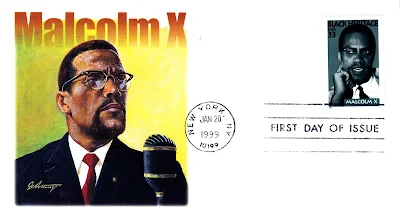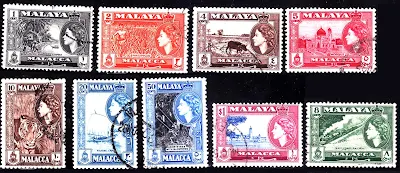Seven of the following overprint VICTORY COMMONWEALTH stamps include:
- Jose Rizal - 2c
- Ox - 4c
- Filipino Worker - 20c
- Filipino maiden - 6c
- Fort Santiago - 10c
- Salt Spring - 12c
- Magellan's Landing - 16c
Myriad philatelic content from around the world, such as first day covers, block stamp sets, maxicards, may be found at this website.
Wednesday, May 31, 2023
Philippines Post Off Victory Stamps: 1944-1945
Philipinas Koreo 25th Anniversary of the Fall of Bataan
Philippines (Japanese Occupation) First Anniversary of the Fall of Bataan and Corregidor - 1943
On 8 December 1941 when, just ten hours after the attack at Pearl Harbor, Japan launched an invasion on the Philippines. Beginning at Manila, the Japanese quickly overwhelmed the troops on the island under the command of General Douglas MacArthur. American aircraft were destroyed while still on the ground, forcing the U.S. naval fleet, lacking air support, to retreat to Java. The American /Filipino ground troops withdrew to the Bataan Peninsula and the island of Corregidor in Manila Bay. With much of the American Pacific Fleet destroyed in Hawaii, aid would not be forthcoming. On 2 January 1942, Manila was declared an “open city” to prevent its destruction and the Japanese marched into the city.
The remaining US/Philippine troops fought until their surrender on the Bataan Peninsula in April 1942 and on Corregidor in May. Over 80,000 prisoners of war were captured by the Japanese at Bataan and were forced to walk to a prison camp more than 100 kilometres to the north in what would be known as the “Bataan Death March”. It is estimated that as many as 10,000 men, weakened by disease and malnutrition, died before reaching their destination.
Philippines (Japanese Occupation) Landscape Definitives on Postal Stationery Overprint - 1943
The name of the sender on the envelope is Henry Kraemer. He was a stamp dealer in the Philippines who had the dubious reputation of affixing cancellation postmarks and censor rubber stamping to otherwise original stamps and cachets. Such is the case here. That said, his covers with these 'fake' cancellations are, believe it or not, collectible, today.
Tuesday, May 30, 2023
Deutsche Post (Weimar Republic) Heinrich von Stephan
Republic of Bavaria - "Bayern" "Genuis" Stamps by Friedrich August von Kaulbach
Deutsches Post (Weimar Republic) 1,000 Years of Union of the Rhineland with Germany
Monday, May 29, 2023
USPS Vietnam War and Vietnam Memorial
USPS Persian Gulf War
Immense human suffering in the Middle East occurred as a result of the Gulf War. Environmental damage occurred when the Iraqis set hundreds of Kuwaiti oil wells on fire and dumped huge amounts of oil into the Persian Gulf. Baghdad was hit by some of the most devastating air raids in history, knocking out communication and public works systems.
USPS "Black Heritage" - Malcolm X
Source: Mystic Stamps
Wednesday, May 24, 2023
Malaya Definitives with QueenElizabeth II - 1957
1c - Black - Copra
2c - Orange - Pineapples
4c - Brown - Rice Field
5c - Red - Mosque
8c - Green - East Coast Train
10c - Brown - Malayan Tiger
20c - Light Blue - Fishing
50c - Dark Blue - Aborigines with Blowpipe
$1 - Purple/Blue - State Secretariat Office
$2 - Red/Green - Bersilat
$5 - Green/Brown - Weaving
The cover shown here originated from Johor Bahru, Johor and is dated 1960 -- three years after these stamps were initially issued.
Friday, May 19, 2023
Sarawak Sir Charles Vyner Brooke with British Crown Overprint
Wednesday, May 17, 2023
North Borneo Definitives with Queen Elizabeth II - 1954 till 1957
- 1c - Mount Kinabalu
- 2c - Murut with Blowpipe
- 3c - Coconut Grove
- 4c - Hemp Drying
- 5c - Cattle at Kota Belud
- 8c - Map of North Borneo
- 10c - Timber Logging
- 15c - Native Prahu at Sandakan
- 20c - Bajau Chief
- 30c - Suluk Craft Lahad Datu
- 50c - Clock Tower Jesselton
- $1 - Bajau Horsemen
North Borneo Pictorial Stamps with Queen Elizabeth II - 1961
Stamps shown here include;
- 1c - Payau
- 4c - Honey Bear
- 5c - Clouded Leopard
- 6c - Dusun Woman with Gong
- 10c - North Borneo Map
- 12c - Tembadau
- 20c - Phalaenopsis Orchid
- 25c - Rhinoceros
- 30c - Murut with Blowpipe
- 35c - Mount Kinabalu
- 50c - Dusun and Buffalo Transport
North Borneo 75th Anniversary of the British North Borneo Company - 1956
- 35c - Mount Kinabalu
- $1 - Arms of Chartered Company
Friday, May 12, 2023
United States Post Office "Overrun Countries" - 1943-1944
The countries honoured were Poland, Czechoslovakia, Norway, Luxembourg, Netherlands, Belgium, France, Greece, Yugoslavia, Albania, Austria, Denmark, and Korea. The stamps were issued in that sequence at various dates in 1943, except the Korea stamp, which was issued 2 November 1944.
The central subjects, which were surface printed, reproduced in natural colours the flags of the respective countries with the name of the country underneath. Rays of light extended from behind the central subjects to the outer frames. The main frames of the stamps, steel engraved, were printed in purple and depicted on the left the phoenix, a mythological bird symbolising the renewal of life, and on the right, in a corresponding position, a kneeling female figure portraying the breaking of the shackles of oppression and enforced servitude. Both figures were supported by pedestals on which, in oval-shaped panels with dark ground, the numeral 5 is indicated in white. These pedestals rest on a panel, in which appeared the word "Cents" in white-faced Roman. Immediately back of the wording the panel was of a darker shade fading out at each end. Across the top of the stamps were the words "United States Postage" in white-faced Gothic, within a ruled panel with ornamental scroll ends.
The concept for the stamps was mooted by President Franklin Roosevelt, an avid stamp collector himself.
The Bureau of Engraving and Printing, Treasury Department, contracted with the American Bank Note Co., New York, N.Y., for printing of these stamps to take advantage of their special multicolour printing equipment.
Labuan Overprints - 1900 till 1906
The stamps shown here include:
8c - Red/Black - Tongkang - Labuan Postage Due 1901 State of North Borneo
10c - Blue/red - Crown Colony - Labuan 1902 Labuan Colony
10c - Crown Colony
James Brooke, “the white Rajah of Sarawak,” aggressively expanded British control over the Sultan of Brunei’s lands on the northern coast of Borneo. He and the British Navy decided Labuan would be a valuable coaling station as well as a base for fighting piracy. In October 1844, when they sailed into Brunei harbor to ask the sultan to give Labuan to Queen Victoria, the Sultan reluctantly agreed. The fact that a British warship near the Sultan’s palace lined up with cannons ready to fire enhanced the persuasiveness of their proposal.
Labuan became a Crown Colony in 1848, hoping it might one day rival Singapore as a trading centre, but these hopes did not bear fruit. The colony survived on grants in aid until 1869, going deeper into debt each year, until administration was transferred to the British North Borneo Company on 1 January 1890. That did not work out well either, and on 1 January 1906, Straits Settlements assumed responsibility for the colony, incorporating Labuan entirely two years later.
Source: American Philatelic Society
Thursday, May 11, 2023
Postes France Tri-Color Legion Waffen SS Strip
Period of validity: until 25 May 1943
Size of each stamp: 40 x 26 mm
Designer: Pierre Gandon
Emission: Semi-Postal
Perforation: 13
Printing: Recess
Print run: 2,416,000
Source: www.allstamp.net
Postes France French Tricolor Legion Bolshevism (LVF) Propaganda Stamps
General Philippe Pétain, head of state of Vichy France, personally disapproved of Frenchmen wearing German uniforms, but never went beyond individual and informal words of support to some specific officers. The Legion of French Volunteers Against Bolshevism volunteered to fight against the USSR on the Eastern Front. It was officially known to the Germans as Infantry Regiment (Infanteriereregiment) 638 LVF (Französischer Infantry-Regiment 638 LVF). The LVF were generally poorly trained, equipped and led, eventually suffering huge losses. By mid-1944 the remaining LVF was incorporated into the French Waffen SS.
Source: www.axishistory.com and www.allstamp.net
Friday, May 5, 2023
1st Anniversary of Malaya Independence at Stadium Merdeka - 1958
Formation of Malaysia - 1963
The original date for the formation of Malaysia was initially set for 1 June 1963. This date was postponed until 31 August 1963 in order to align with Merdeka Day. However, due to objections from neighbouring countries (namely Indonesia with support from China, USSR and Philippines and various political parties in Sabah and Sarawak), the date was rescheduled to 16 September 1963.
Interestingly, this postal cachet with the national flag included the 1963 Merdeka slogan “Berjaya Malaysia” which would have been applicable for the original print date of 31 August 1963. Additionally, the cancellation postmark for this FDC originated from Singapore, which at the time was part of Malaysia and remained so up until 1965. This FDC was posted to New Zealand in 1963, which I purchased from a philatelist there; so, finally after 60 years, it has now returned home to Malaysia.

























